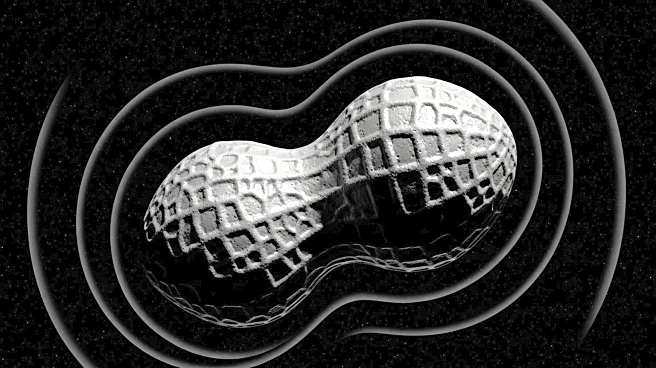What's Happening?
NASA's Goldstone Solar System Radar has captured detailed images of asteroid 1997 QK1, revealing its elongated, peanut-shaped structure. The asteroid, approximately 660 feet long, was observed during its closest approach to Earth in over 350 years, at a distance of about 1.9 million miles. The radar images show two connected lobes with concavities, suggesting it is a 'contact binary.' These observations have significantly reduced uncertainties in the asteroid's trajectory, ensuring it poses no threat to Earth for the foreseeable future.
Why It's Important?
The detailed radar observations of asteroid 1997 QK1 are crucial for planetary defense, as they enhance understanding of potentially hazardous near-Earth objects. By reducing uncertainties in the asteroid's future motion, NASA can better predict its path and assess any potential risks. This research supports the broader efforts of NASA's Near-Earth Object Observations Program, which aims to safeguard Earth from asteroid impacts. The findings also contribute to scientific knowledge about the composition and structure of contact binary asteroids.
What's Next?
NASA will continue to monitor asteroid 1997 QK1 and other near-Earth objects to refine their trajectories and assess potential threats. The data collected will be used to improve models predicting asteroid paths and inform future planetary defense strategies. Ongoing research may also explore the asteroid's composition and surface features, providing insights into the formation and evolution of contact binary asteroids.
Beyond the Headlines
The study of asteroid 1997 QK1 highlights the importance of international collaboration in planetary defense. As space agencies worldwide share data and resources, they enhance global preparedness for potential asteroid impacts. The research also underscores the need for continued investment in radar technology and space observation programs to protect Earth from cosmic threats.












